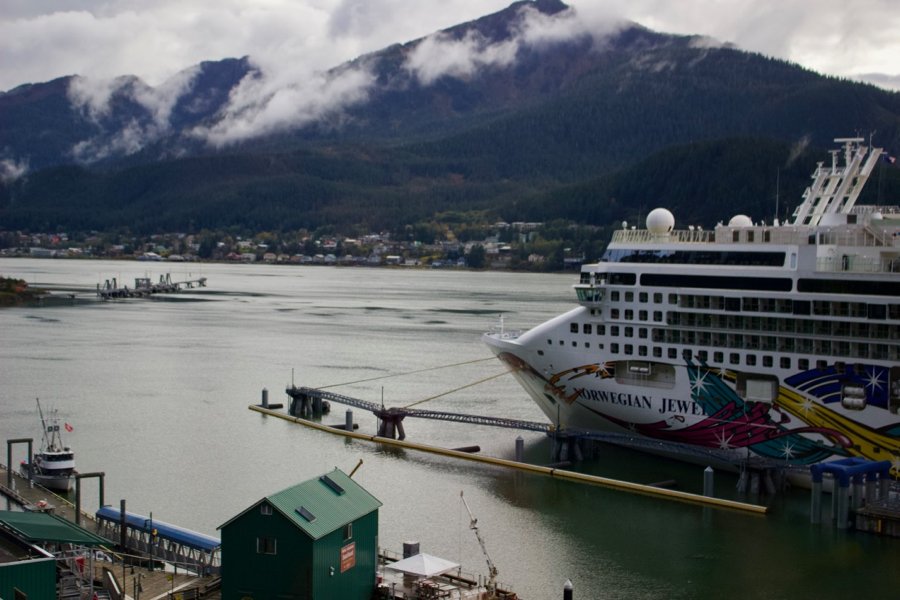Table Of Content
A spokesperson for Carnival told Insider that the company is the only major cruise corporation with fewer greenhouse gas emissions today than in 2011, despite a forecasted capacity increase of 30%. As aerosol emissions fall due to new regulations, like the IMO's shipping fuel rule, that could speed up global temperature rise in the short term, as Dr. Robert Rohde, lead scientist at Berkeley Earth, explained in a Twitter thread on Wednesday. But the industry's tendencies of overconsumption extend beyond all-you-can-eat buffets and unlimited drink packages — and come at an environmental cost. But the journey to those pristine areas, which involves sailing along Canada’s west coast for two or three days, is leaving behind a trail of toxic waste, including within marine protected areas (MPAs), according to new research. For some time, campaigners have highlighted the dumping of sewage and wastewater as the face of an unsustainable cruise industry. Carnival was hit with a $40 million fine for illegal waste disposal and was put on federal criminal probation in 2017.
What are the long-term consequences of cruise ship pollution on marine life and ecosystems?
Cruise ship emissions can have a significant impact on air and water quality. Air pollution from ship engines can harm human health and contribute to climate change. Water pollution is caused by discharge of untreated sewage, gray water, and ballast water, which can contain harmful chemicals and pathogens. Noise pollution is caused by ship engines, which can disrupt marine ecosystems and harm marine mammals. Cruise ships are known to cause significant harm to marine life due to their pollution. The following sub-sections describe how noise pollution and destruction of coral reefs are two ways that cruise ships impact marine life.
International laws and regulations
Cruise ships polluting UK coast as they ignore greener power options - The Guardian
Cruise ships polluting UK coast as they ignore greener power options.
Posted: Sat, 04 Nov 2023 07:00:00 GMT [source]
Cruise ships visiting Britain are frequently failing to plug into “zero emission” onshore power and instead running their engines and polluting the local environment with fumes. On 30 July, six cruise ships stopped in Barcelona, the city T&E says is the European destination most affected by cruise ships. This means 10,000 to 30,000 passengers could be cascading along Barcelona’s Ramblas. Cruise ship passengers have suffered from sewage-borne illnesses as reported in recent news reports.
How cruise ships became a catastrophe for the planet – video - The Guardian
How cruise ships became a catastrophe for the planet – video.
Posted: Thu, 07 Mar 2024 08:00:00 GMT [source]
German trains introduce ‘smooch cabins’ and digital seat ‘towels’
A study published in the journal Marine Pollution Bulletin in December 2021 found a large cruise ship could have a carbon footprint greater than 12,000 cars. An analysis published in June by T&E found that despite the introduction of a new cap of sulphur in marine fuels in 2020, 218 cruise ships operating in Europe in 2022 emitted more sulphur oxides than a billion cars. Electrical connections in ports have resulted in less air pollution and greenhouse gas emissions in Hamburg, Rostock and Kiel. Venice was Europe’s third most polluted cruise port in 2019 but thanks to a 2021 ban on large cruise ships, the city has reduced sulphur emissions by 80%.
Heavy Metal Pollution is Causing Sea Turtles to Be Born Female
The industry also says it is committed to greener practices, with a target of net zero carbon cruising by 2050. Carnival Corporation, the world’s largest leisure travel company, is building new ships powered by LNG, and cruise operators are also conducting trials with biofuels. New LNG engines reduce emissions of sulphur oxides but campaigners say the engines and the fuel production process leak methane, an extremely potent greenhouse gas.
As we are all aware, poor air quality is one of the major global health hazards as, according to the World Health Organisation, 4.2 million people die due to air pollution. Just as vehicle exhaust tanks emit waste fumes and toxic air, cruise ships’ engines also emit such unwanted air. A 3000-capacity cruise ship generates 150,000 gallons of sewage and graywater, enough to fill 10 swimming pools. Many other hazardous wastes such as oily bilge water and bio-waste containing viruses are generated on a cruise trip.
However, via a process known as “methane slip,” this fuel can also exacerbate emissions of this shorter-lived, but more potent greenhouse gas, according to research. Larger ships make up the vast majority of black carbon emissions, with container ships, bulk carriers and oil tankers emitting 60 percent of all BC emissions, according to the 2021 European Maritime Transport Environmental report. Although cruise ships make up only 1 percent of the global fleet, they account for 6 percent of black carbon (BC) emissions.
What is the impact of cruise ship emissions on air and water quality?
This reveals how disproportionately bad for the environment cruise ships are, releasing the highest amount of black carbon per ship of any vessel. Container ships, on the other hand, produce around a third of the black carbon per ship, at only 3.5 tonnes. But with so many of them (5008 according to the cited 2017 report, or 5,534 according to our latest stats), they have a far greater impact on the environment, accounting for 26 percent of the global fleet’s black carbon emissions. Of the top cruise lines, Disney is open and transparent about their environmental impacts. Disney ships utilize fuel with a 0.1% sulfur content which is key to reducing climate-harming emissions. They like to provide their vacationers with a once-in-a-lifetime travel experience, including going to untouched areas of the planet and to create a “private island” experience.
Water pollution from untreated sewage, gray water, and ballast water can harm marine ecosystems and contaminate local water sources. In addition, the large amount of waste generated by cruise ships can cause nutrient imbalances in the water, leading to the growth of harmful algae that can suffocate and kill coral reefs. One of the main sources of oil pollution in the ocean is from cruise ships. In a study conducted in Ha Long Bay, Vietnam, it was found that oil spills from sunken cruise boats were responsible for more than 60% of biodiesel and petroleum diesel spills in the area [2]. The study found that while cruise ship emissions were not the sole source of air pollution in the port, they did contribute to the overall levels of pollution. This article is part of a series on Clean Water which looks at various threats to the water quality of our oceans, and the negative impacts polluted waters can have on the environment and human health.
Royal Caribbean’s pollution is second only to Carnival Corporation when it comes to the criminal fines they’ve had to pay. They were forced to pay $18 million in fines for 21 federal felonies in 1999 due to dumping hazardous chemicals and waste oil in coastal waters. Coast Guard and Justice Department by falsifying oil logs to cover up their crimes. And because we know that cruise ship pollution is toxic throughout the entire industry, we thought we’d push away from the traditional statistics and provide more specifics about each of the top cruise lines.
Black carbon, or “soot” as it’s more commonly known, is created through the partial combustion of diesel, coal, or other biomass. When inhaled, the small particles can lead to health problems, namely with respiratory and cardiovascular illnesses. This damage appears to be regional, as when soot blankets snow or ice, it reduces the natural ‘albedo’ effect - the ability to reflect sunlight - while heating up the surface, leading to greater melt, and more warming than elsewhere. Millions of people take to the seas year after year, and the number of tourists is expected to continue to rise.

They can also affect local air and water quality, and contribute to the spread of invasive species. Cruise ships contribute to the destruction of coral reefs in several ways, including anchoring, sewage discharge, and the release of chemicals. However, these massive ships have a significant impact on the environment, particularly the oceans they travel through. These accidents also affect these coral reefs’ rich ecological integrity and biodiversity. In 2017, the British cruise ship MS Caledonian crashed onto the pristine coral reefs of Indonesia, destroying 17,222 square feet of coral reefs and causing more than $19 million in irreparable damage. “What I like the most is that I don’t have to worry about looking for a hotel or cooking,” she says.
“We don’t have the details, and we don’t have, which is the most important, independent third-party audits or third-party assessment of technology,” Hrvoje Carić, a researcher at Croatia’s Institute for Tourism, told Mongabay. A cruise ship sails past the International Commerce Centre (ICC) in Hong Kong under polluting... Considering the risks and the damages caused to the marine environment, countries have laid proper resolutions to protect the oceanic surroundings. Sascha Gill, vice-president of sustainability at Clia, says the T&E report uses “default values” and that the industry tends to use LNG because it is widely available, “despite not being the cheapest option”.

No comments:
Post a Comment